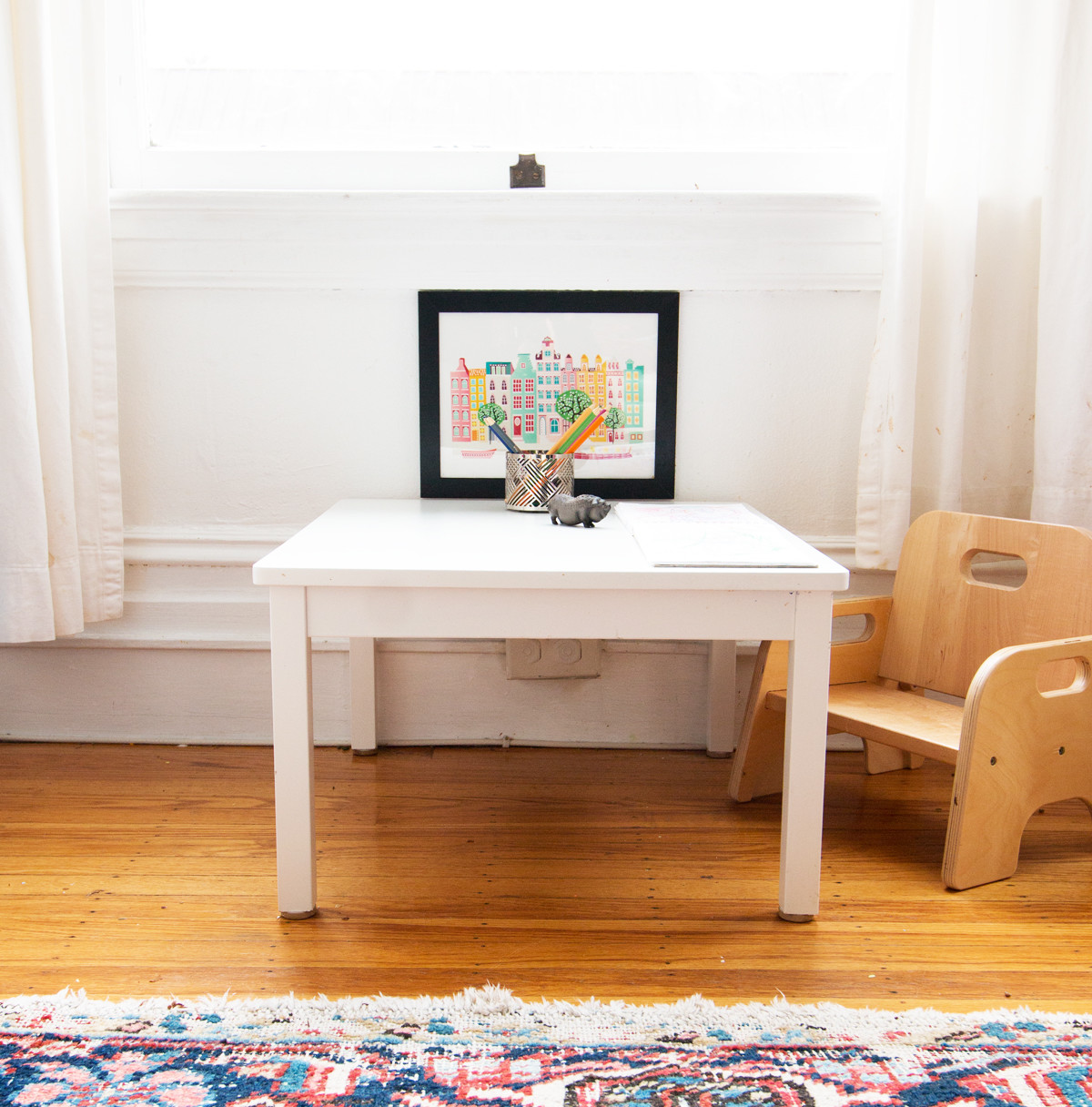Maria Montessori put a lot of emphasis on what she called the “weaning table.” Two of the most common tenets in a Montessori classroom are “help me do it myself” and resisting doing for the child what she can do for herself. Montessori uses the dining experience as a focal point for both those lessons.
The table and chair, even used for infants as young as six months old, is meant to instill a feeling of independence and competence in babies and toddlers.
“Seated in her chair opposite her mother and father, the child both receives a new message of separation and independence from her parent and can see what her parent is doing. Thus she is given an indirect lesson in feeding herself in the future.”
— Montessor From The Start
I’d say this has been one of my favorite Montessori ideas, maybe on par with the tray idea itself. Bean started using the table for eating and play around 6 months, when we started solids. We used this in lieu of a high chair. She’s always been into food and eating, so getting her to sit at the table was not a problem. Playing at the table has worked out wonderfully too. Something about sitting at a table makes her focus on the task at hand, in a way that doesn’t really happen when she plays on the floor.
Not that this was all smooth sailing, but Montessori uses every single thing as a teaching lesson, so even non-desirable behavior became the source of a lesson. Once she figured out that she could push away from the table by herself and crawl away (exciting! liberating!), we did remind her to stay in her chair until she was all done eating. Once we thought she was old enough, we told her walking away meant that snack/lunch/dinner time was over. Again, she is very into food, so I only had to lay down that rule once.
Otherwise, she’d happily crawl (and eventually run) to her table when it was time to eat. She’d pull out her chair and climb into it, even though she was only 8 months old. It felt like a very functional relationship to mealtimes, and I think having everything on her own terms (a chair her size, a table her size, dishware her size, etc) gave her a huge sense of control over meals.
We also had a Tripp Trapp chair pulled up to the kitchen table. Eventually, Bean stopped using the weaning table as she figured out how to climb up and down the Tripp Trapp chair by herself. (I’d always give her the choice of where she wanted to eat, and her preference slowly changed in favor of the kitchen table.) It was a huge source of pride to her that she could seat herself at the table by herself.
Now, this table is purely used for art, play, and sometimes snacks. Bean will sit at it for an hour at a time to draw and play with her animal friends. Or, she’ll bring over a tray from her shelves and sit down to inspect it. When toddler friends come over, they always gravitate first to the table and then her toys.
All in all, it has worked out even better than we imagined.








Julia
Hello! I am really enjoying your blog. I kind of stumbled upon the Montessori way by accident because I liked the minimalist style and it turns out I agree with the philosophy too! Can I ask where you found your child’s weaning table? I am trying to find something that is the proper 14″ for my son.
Thanks!
Julia
9/11/2015 at 6:20 pm
Maria
Hi Julia! Thanks for reading! It’s Ikea’s Kritter table, but we sawed the legs down. We used Community Plaything’s Chair and Table Height recommendations to figure out the table height based on her 6″ chair.
We just had to get her a bigger chair, and ended up buying another Kritter table to hack. I haven’t been able to find as cheap a solution elsewhere. Good luck with whatever you end up with! I still can’t say enough good things about her (extremely little!) table.
9/11/2015 at 7:35 pm